KOLYMA: IN THE SHADOW OF TIME
2014—2016, 2020
The project title quotes Varlam Shalamov’s poem. Shalamov is the author of “Kolyma Tales”, a prisoner of Dalstroy*, who could both convey the majesty of Kolyma’s wilderness and the horror of Stalin’s Gulag. How did Kolyma change since Shalamov’s time, in more than 50 years; what hides “in the shadow of time”?
The first thing we think of when we hear “Kolyma” is the years of the Stalin’s repressions. It still bears some scars of the past, the age of brutal development, costing the lives of thousands of Gulag prisoners. Though most of the camps and mines left almost no trace to be seen today, the nature still vividly remembers the history and those hundreds of thousands of souls who worked here and also those who never came back.
Today not many locals can still remember the Dalstroy period, the majority of Kolyma residents were born and grew up in a new reality. Today’s Kolyma suffers mainly from disrepair and abandonment, as not only the Gulag’s remnants are fading away but also the infrastructure built in the 60’s and 70’s is gradually coming to ruin. Settlements and towns fade away one by one. A typical for Kolyma story: factories close, people first lose their jobs, then the lights go dark, next central heating runs cold, forcing them into conditions impossible for normal life. People are left with no choice but to leave their homes. The population of Magadan Region shrank by two thirds, since the 90’s.
But in spite of all the social shocks of the 20’th century, in spite of all the scars that Kolyma still bears, Kolyma lives, but lives its own life, in the shadow of time.
*Dalstroy (Russian: Дальстро́й) was an organization set up in 1931 by the Soviet NKVD (the predecessor of the KGB) in order to manage road construction and the mining of gold in Kolyma using forced labor of prisoners. Over the years, Dalstroy created about 80 Gulag camps across the Kolyma region.

Abandoned ships near the fishing port on the shores of Nagayev Bay, Magadan, 2014.
Magadan is the capital of Kolyma, founded in 1930 on the coast of the Sea of Okhotsk in Nagayev Bay. From 1932 to 1952 Magadan was a major transit center for prisoners sent to labor camps of Gulag.
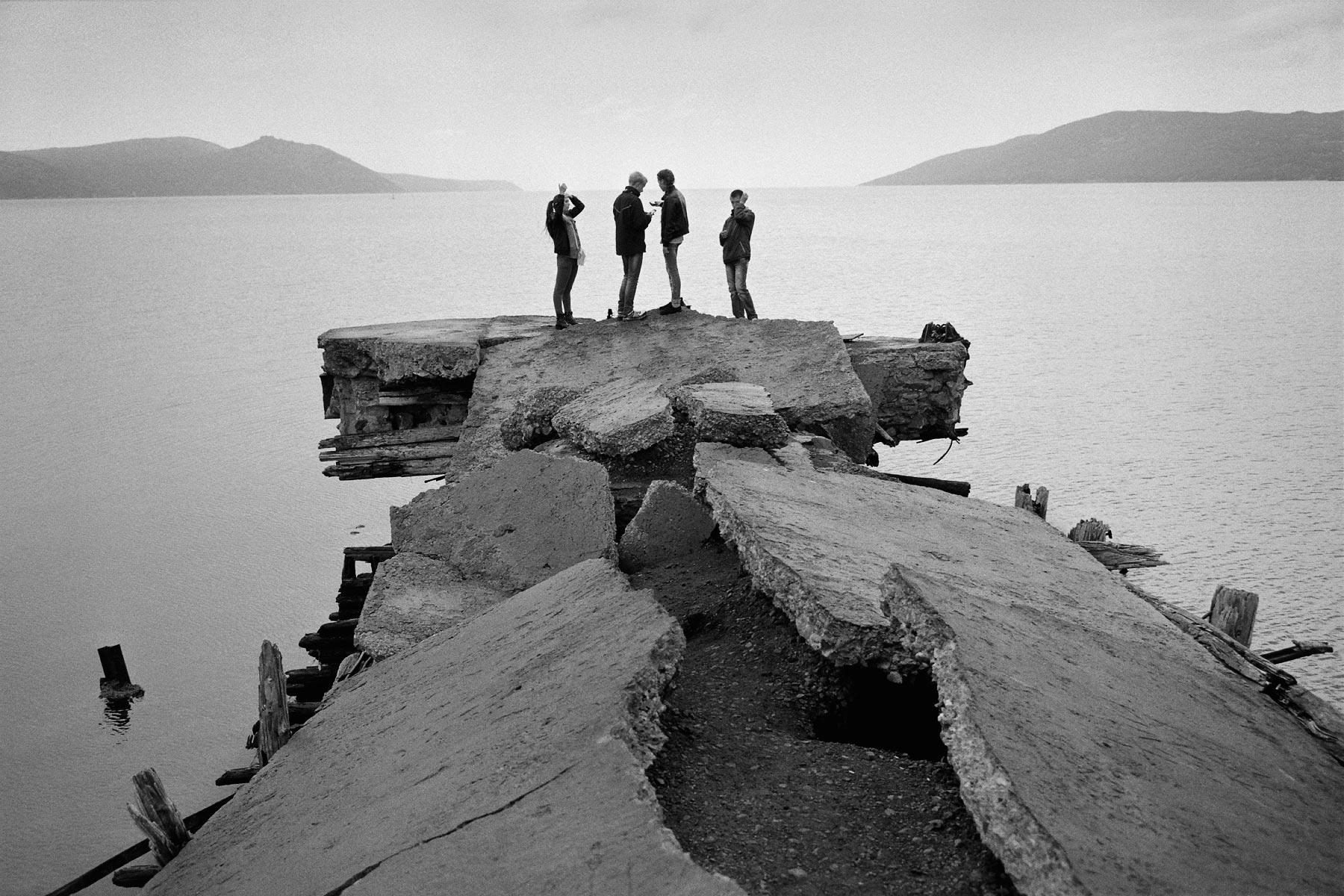
Old pier at Nagayev Bay, Magadan, 2014.
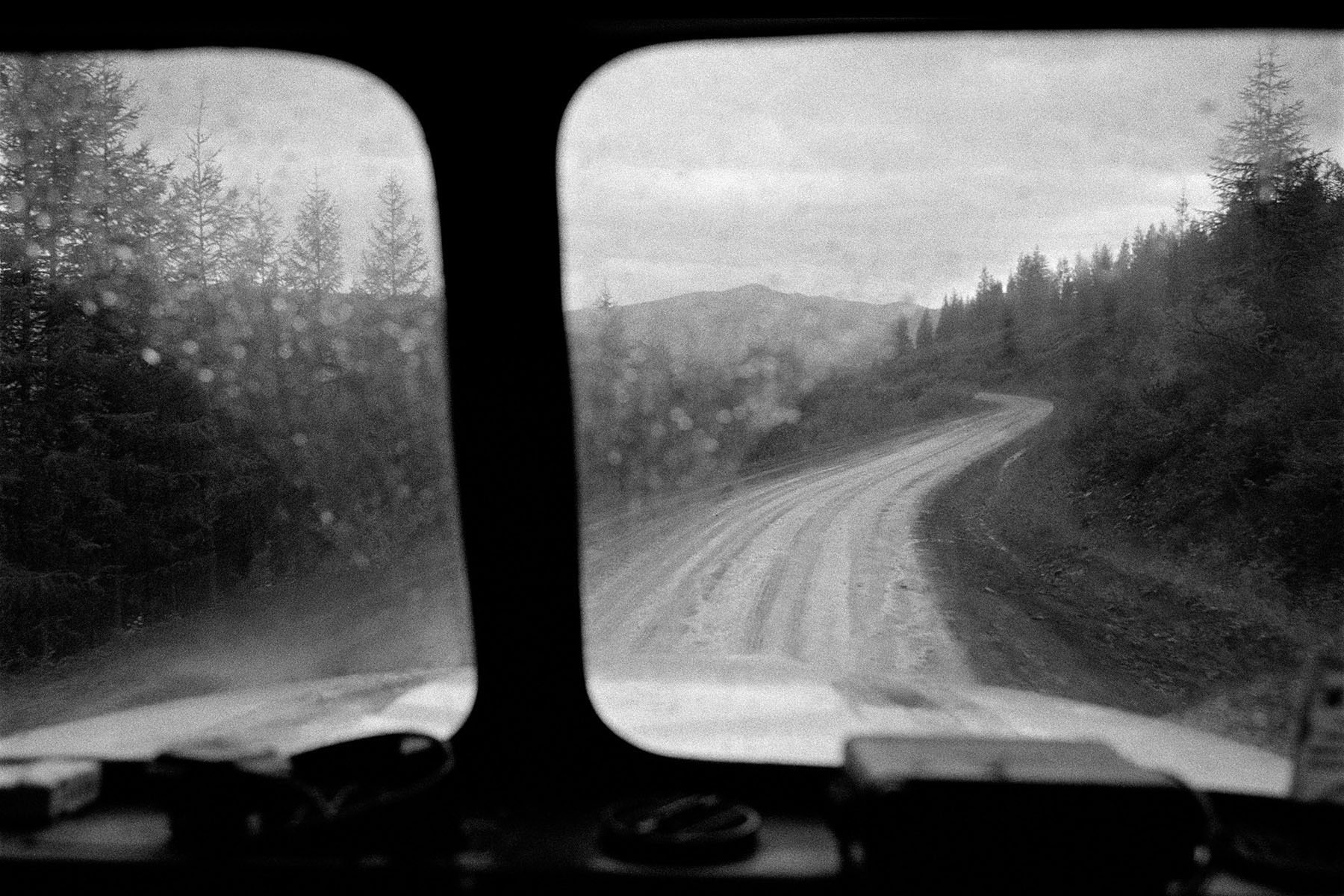
The
Kolyma Highway is the main road in the Magadan region. The track was built in
the
1930s–50s, mainly by labor camp prisoners.
Sinegorye, 2015.
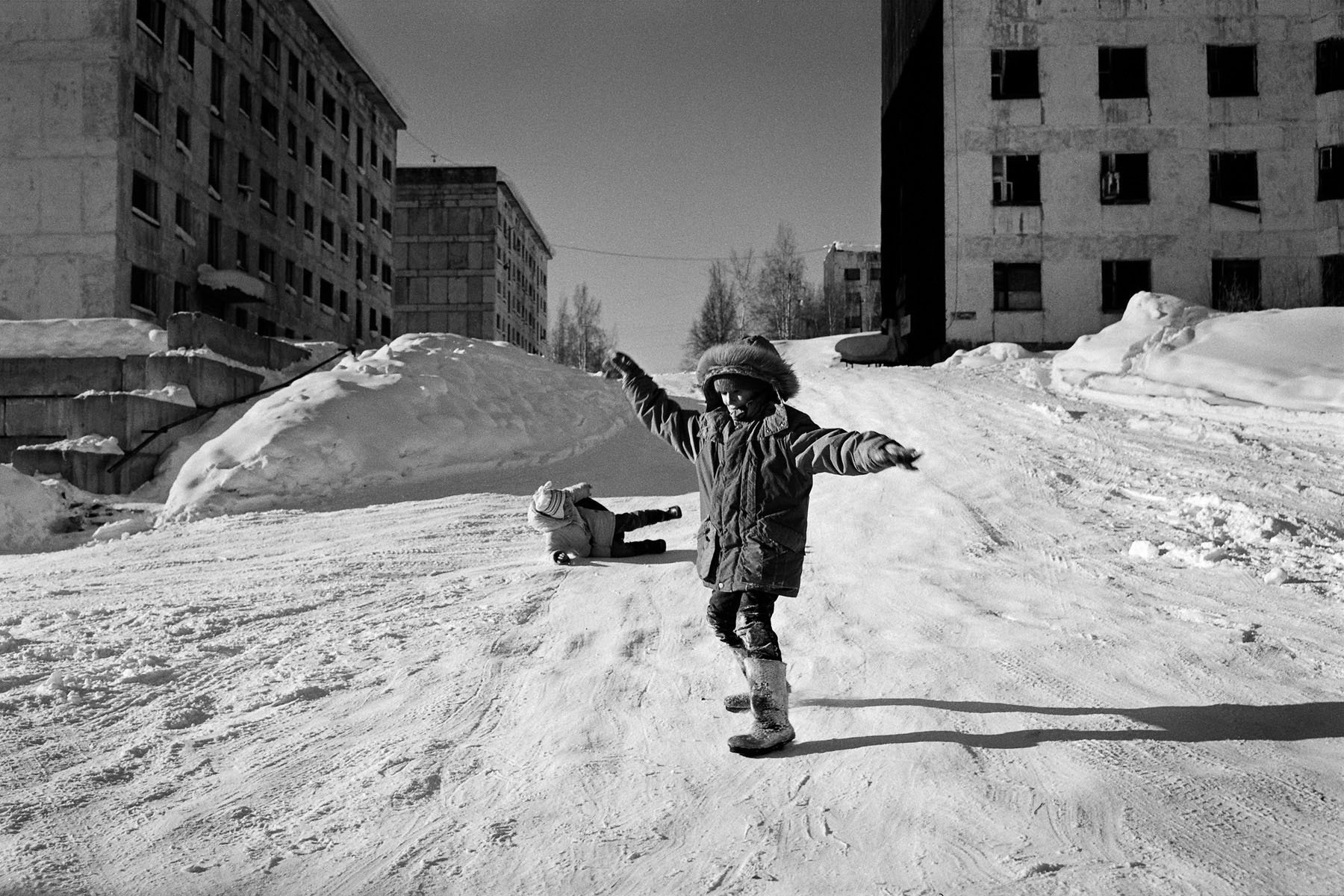
Sinegorye, 2015.
The youngest town in the Magadan region, Sinegorye was built in the period from 1971 to 1981 to house workers for the construction of the Kolyma Hydroelectric Plant and after its completion, the majority of the town’s inhabitants moved away. These days, around two thirds of the town’s buildings are abandoned and the remaining population mainly consists of the plant employees and their families.
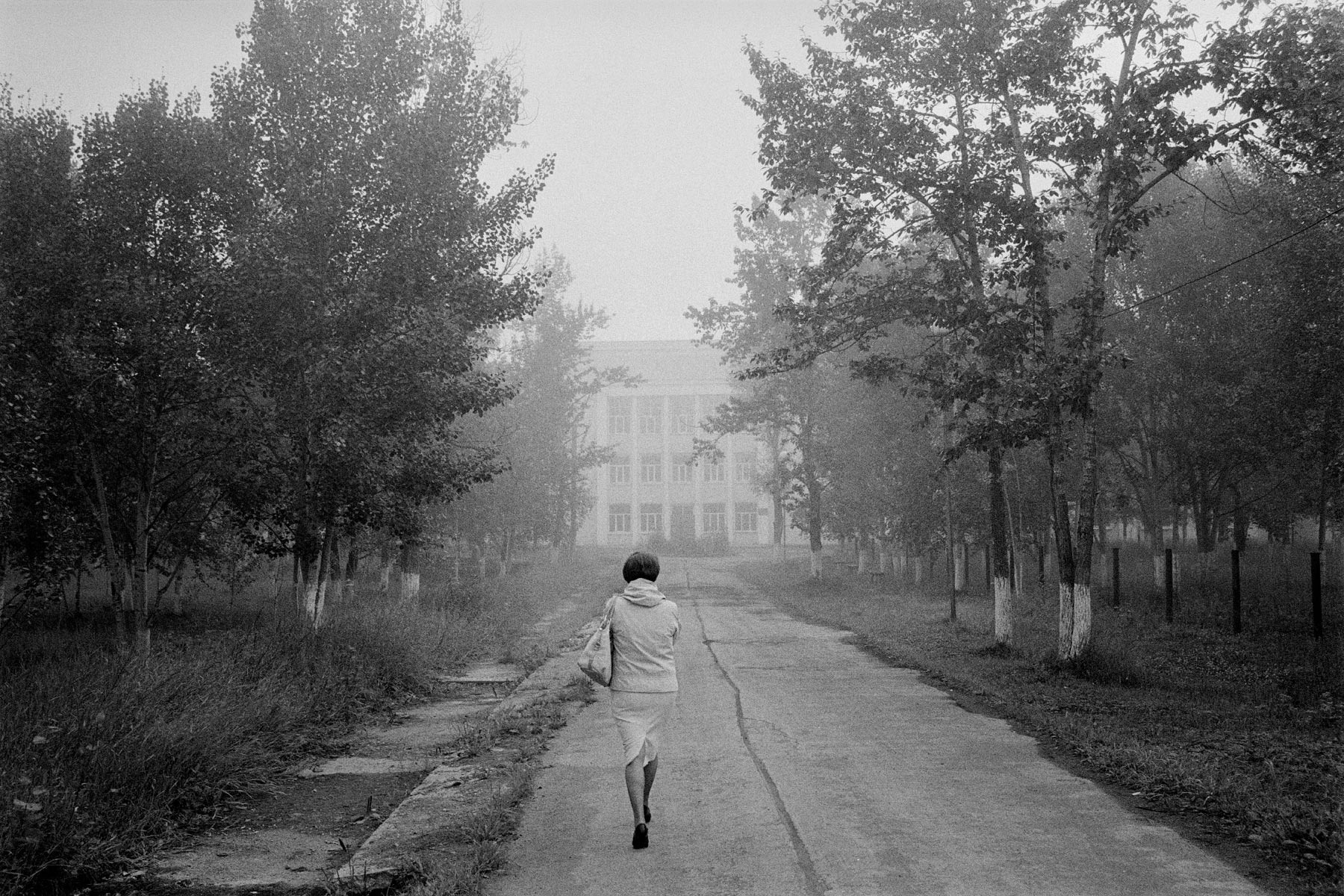
Hospital in Debin, 2014.
Since the second half of the 1940's, this was the central hospital for prisoners. In 1946–1951, Varlam Shalamov worked here as a paramedic.
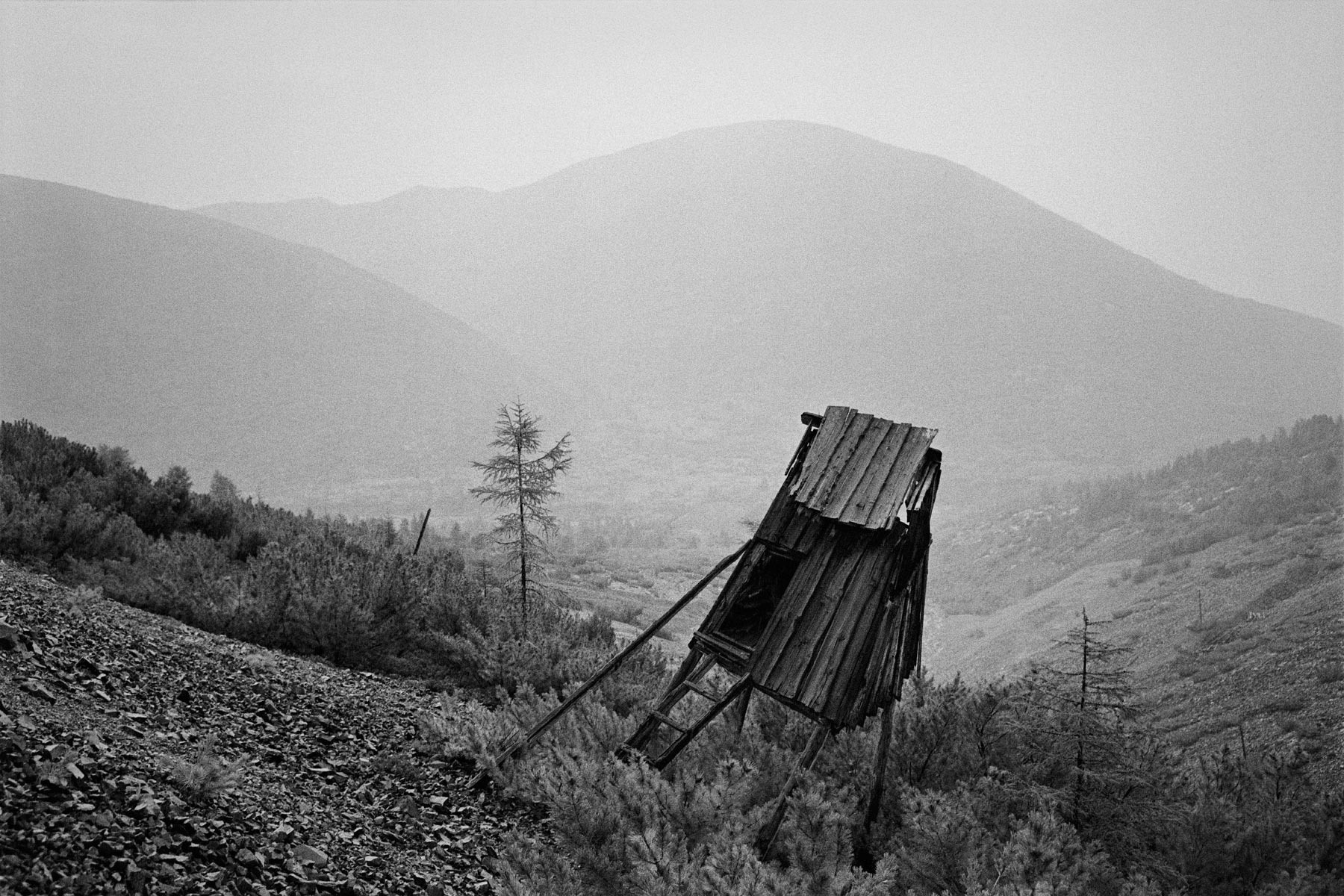
Guard tower in Dneprovsky camp, 2014.
Dneprovsky is one of the few extant camps of the Kolyma Gulag. From 1941 to 1955 there was a pit tin mine where ordinary prisoners, “especially dangerous criminals” and former Soviet POWs labored. Along with them also worked a number of repressed people, convicted on political grounds.
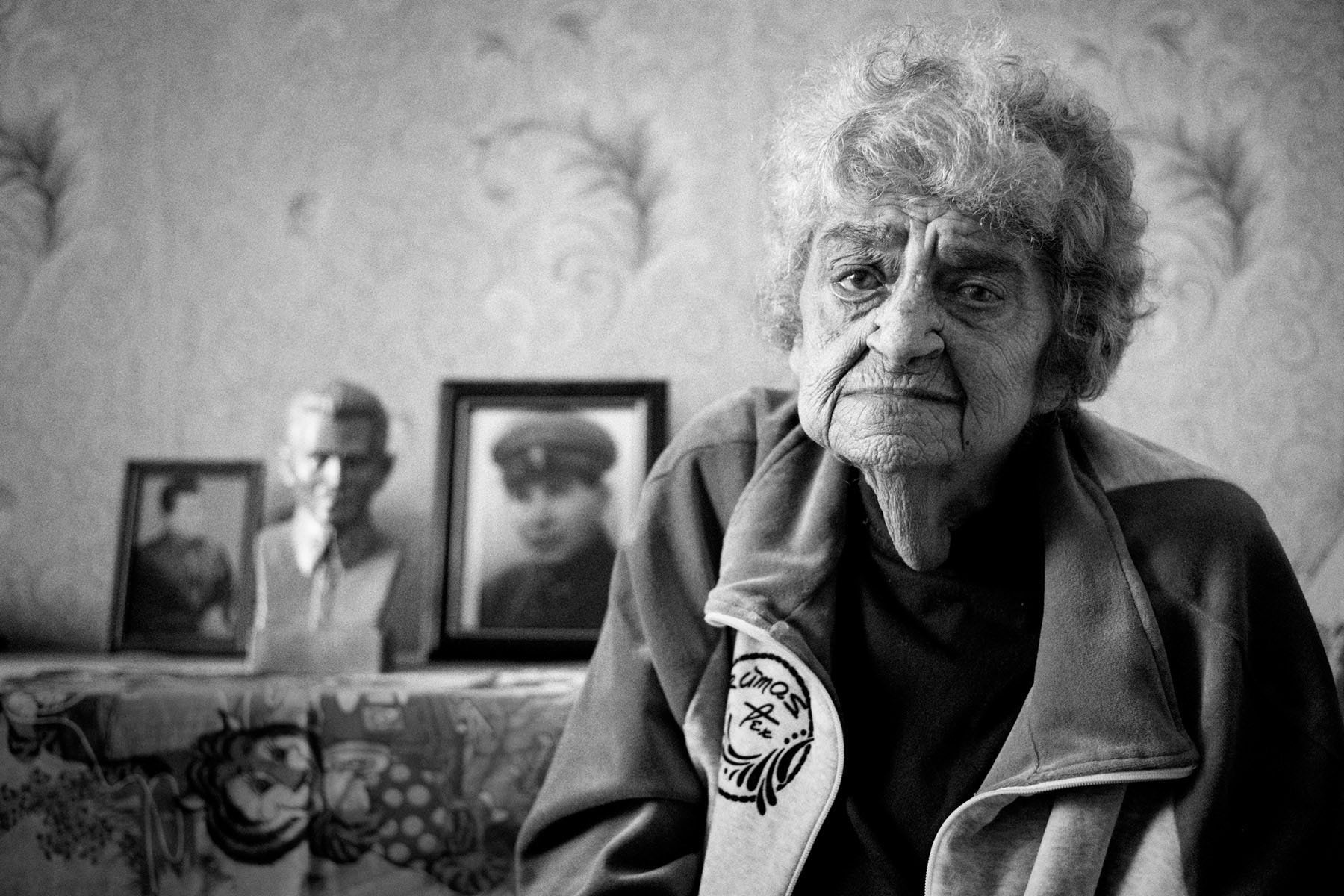
Natalia
Khayutina (1932–2016) is the adopted daughter of Commissar of Internal Affairs Nikolay
Ezhov. The period of harshest repression in
1937–1938 — known as
“Ezhovschina” — bears his name. Following Ezhov’s arrest, Natalia was
sent to an orphanage. She graduated from music college and voluntarily went to
the Far North, where she worked in a music school until retirement.
Reproduction of “Mona Lisa” by Leonardo da Vinci in a repair shop at Utinka gold mine, 2016.

Worker at Spokoyny gold mine, 2014.
In the 1940s–50s a maximum security labor camp was built in the valley of Spokoyny creek. The camp housed recidivists and repeatedly convicted criminals. Close by was the mine where the prisoners worked, including Varlam Shalamov from 1943 to 1944. Today there is still work going on here, goldminers from Vladimir Nyman’s artel still mine gold.
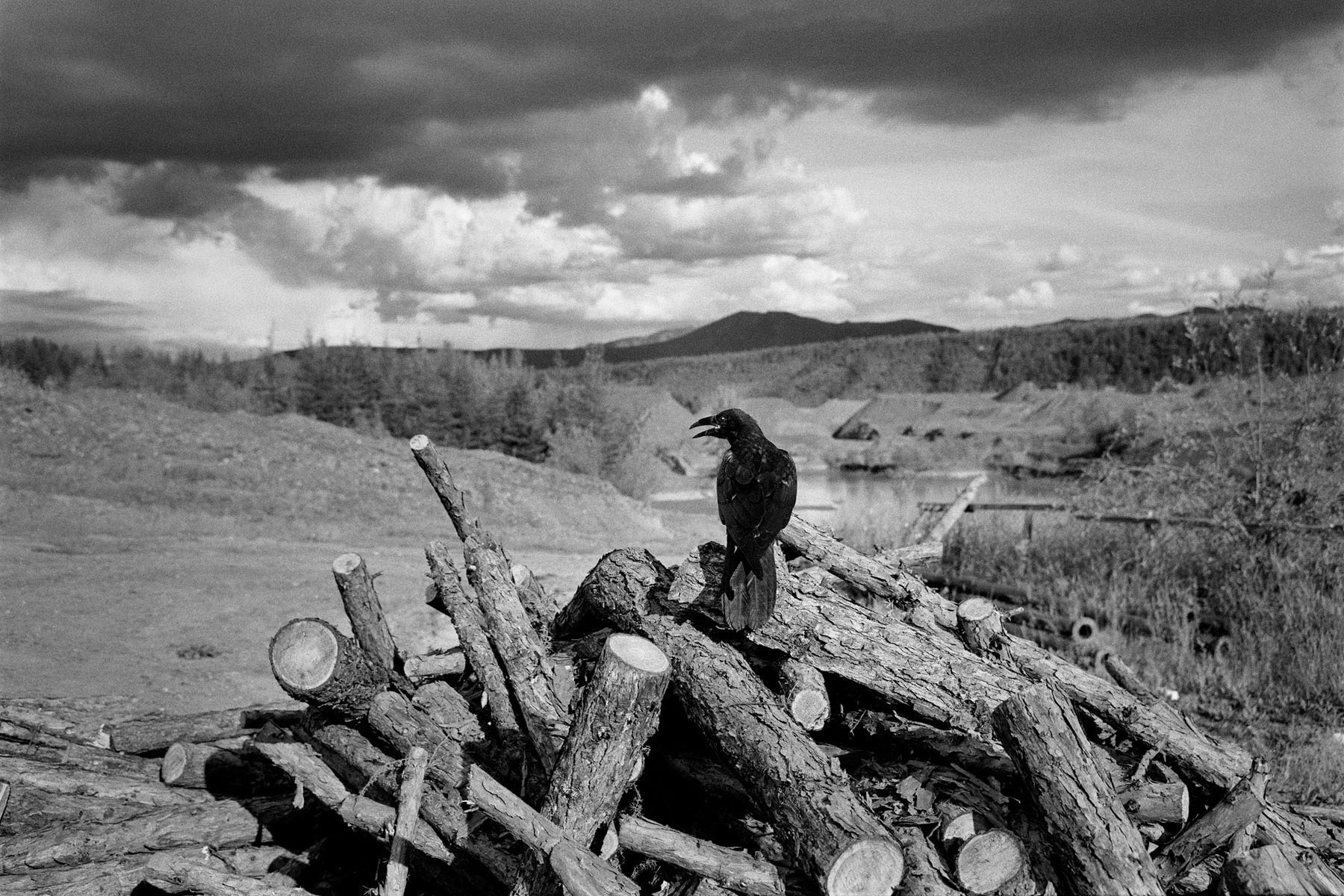
Black raven at Spokoyny gold mine, 2014.
“Vector” is a gold mining company engaged in the extraction and exploration of placer gold deposits in the Yagodnoye district of the Magadan Region, 2020.
The Magadan Region is Russia’s leading gold mining area. Kolyma produces about 24.5 tons of gold annually. Previously in USSR state was mining for gold, but now the third party contractors do all the job, however they are obliged to sell all gold to the state.
Most gold deposits are located far from populated areas, no one permanently lives there, for the organization of production, the rotational method of servicing production is traditionally used. The gold mining season lasts from March to November. Miners live in shift camps; the usual working day is twelve hours; the work week is six days.
The valley of Myakit river, 2015.
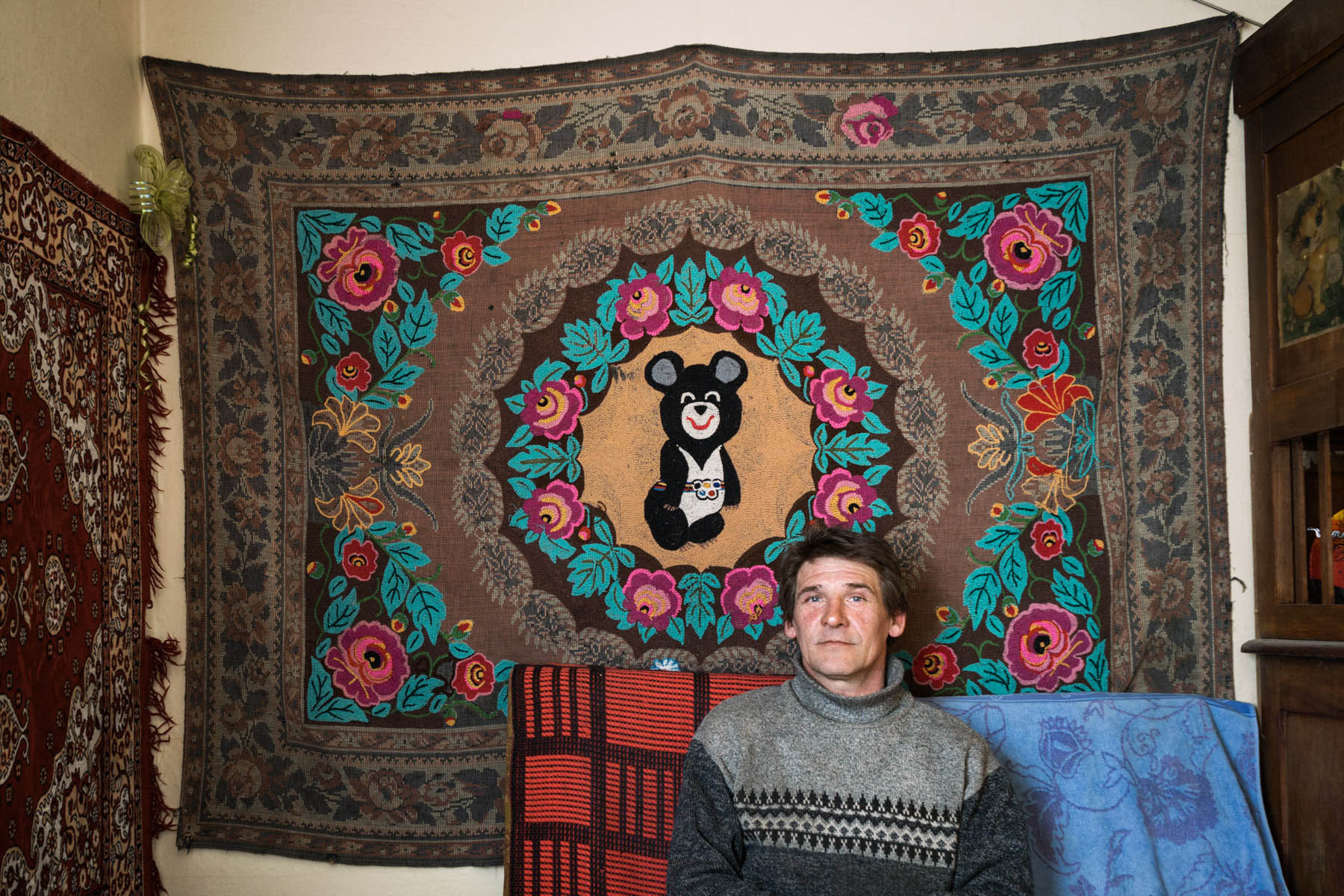
Man in the background of a carpet depicting a Russian Bear mascot of the 1980 Moscow Olympic Games, Senokosny, 2015.
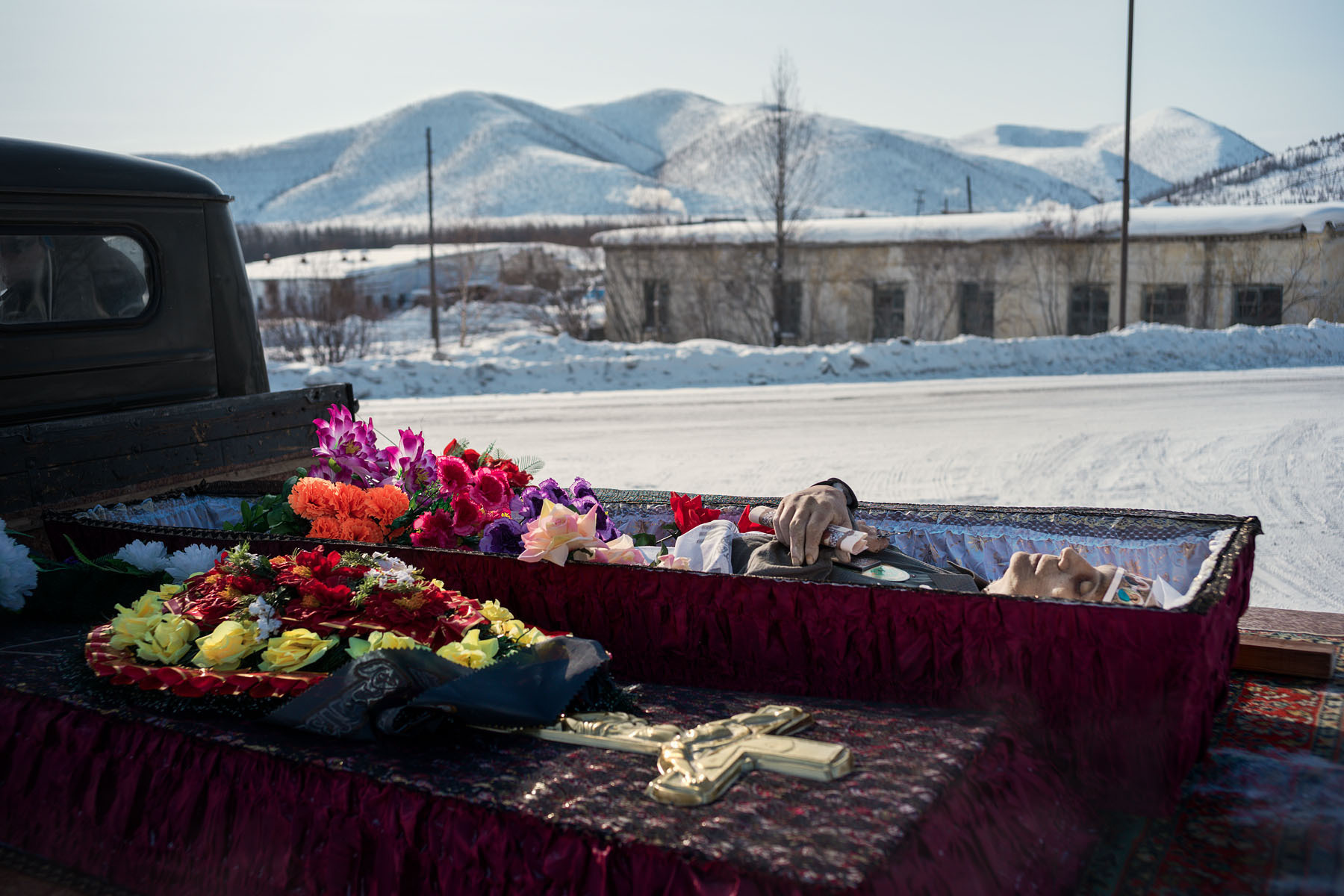
Funeral in Yagodnoe, 2016.
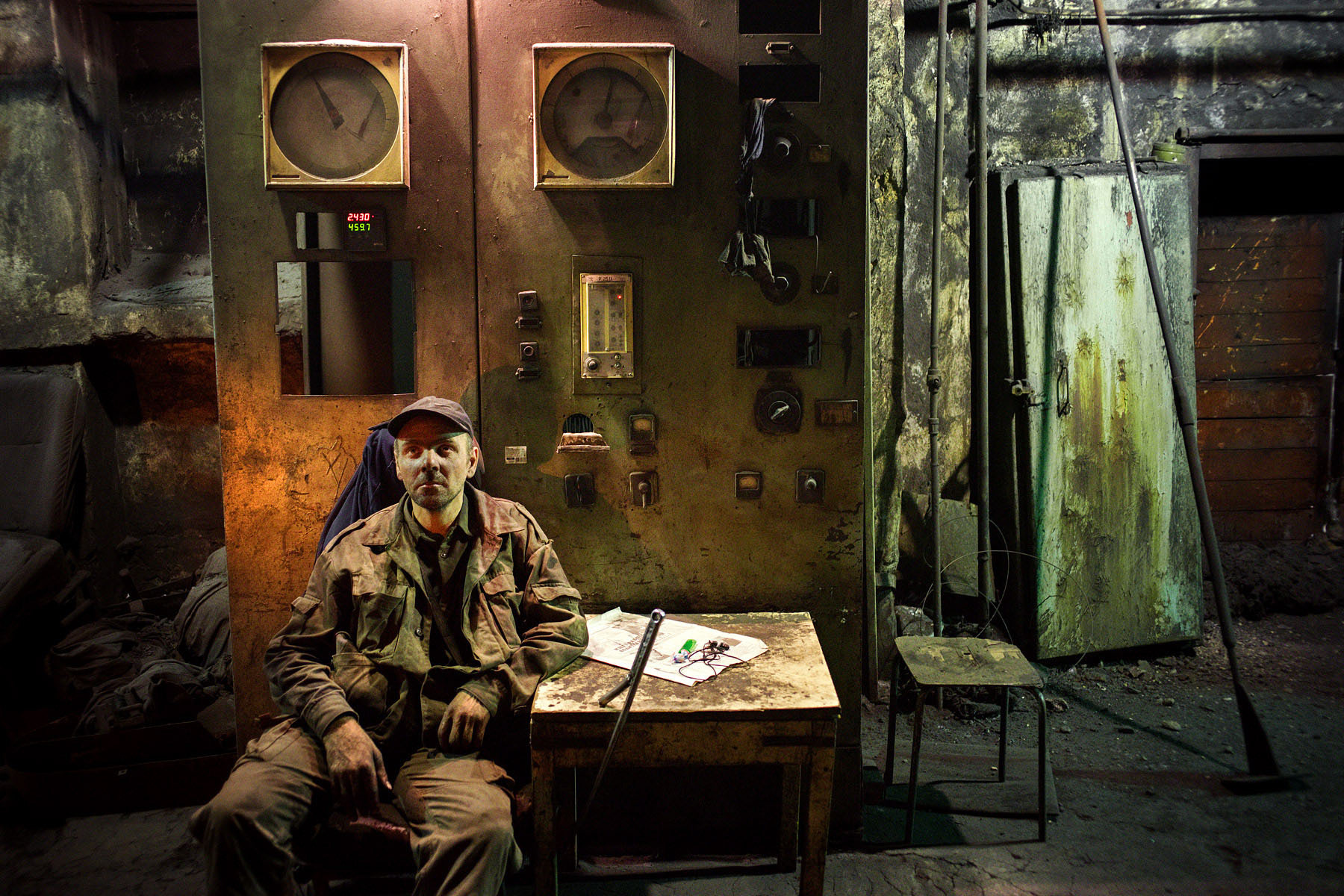
Worker at the old boiler house, Orotukan, 2016.
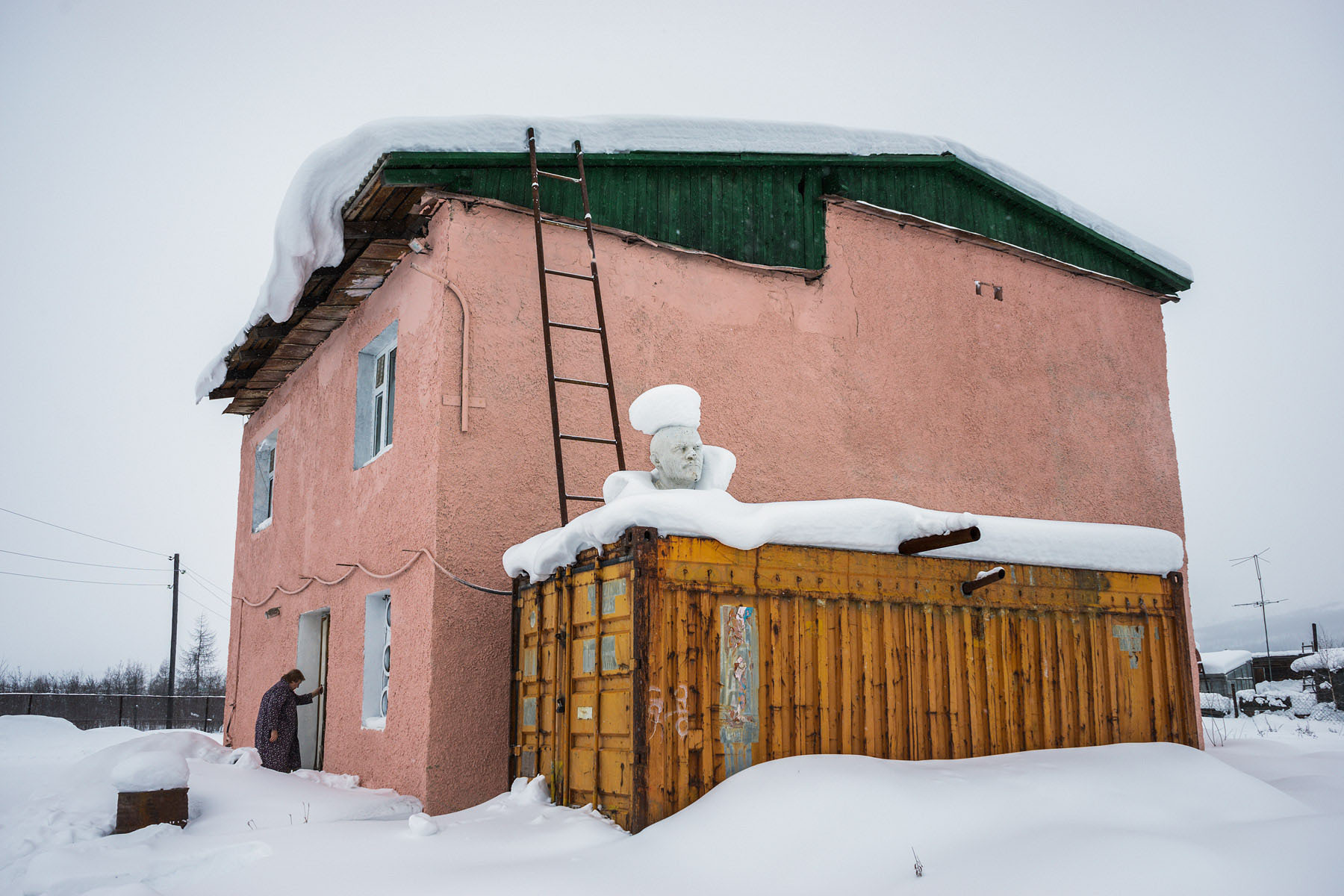
Bust of Lenin, Debin, 2016.
Old bridges on Obryvisty stream, Kolyma Highway, 2014.
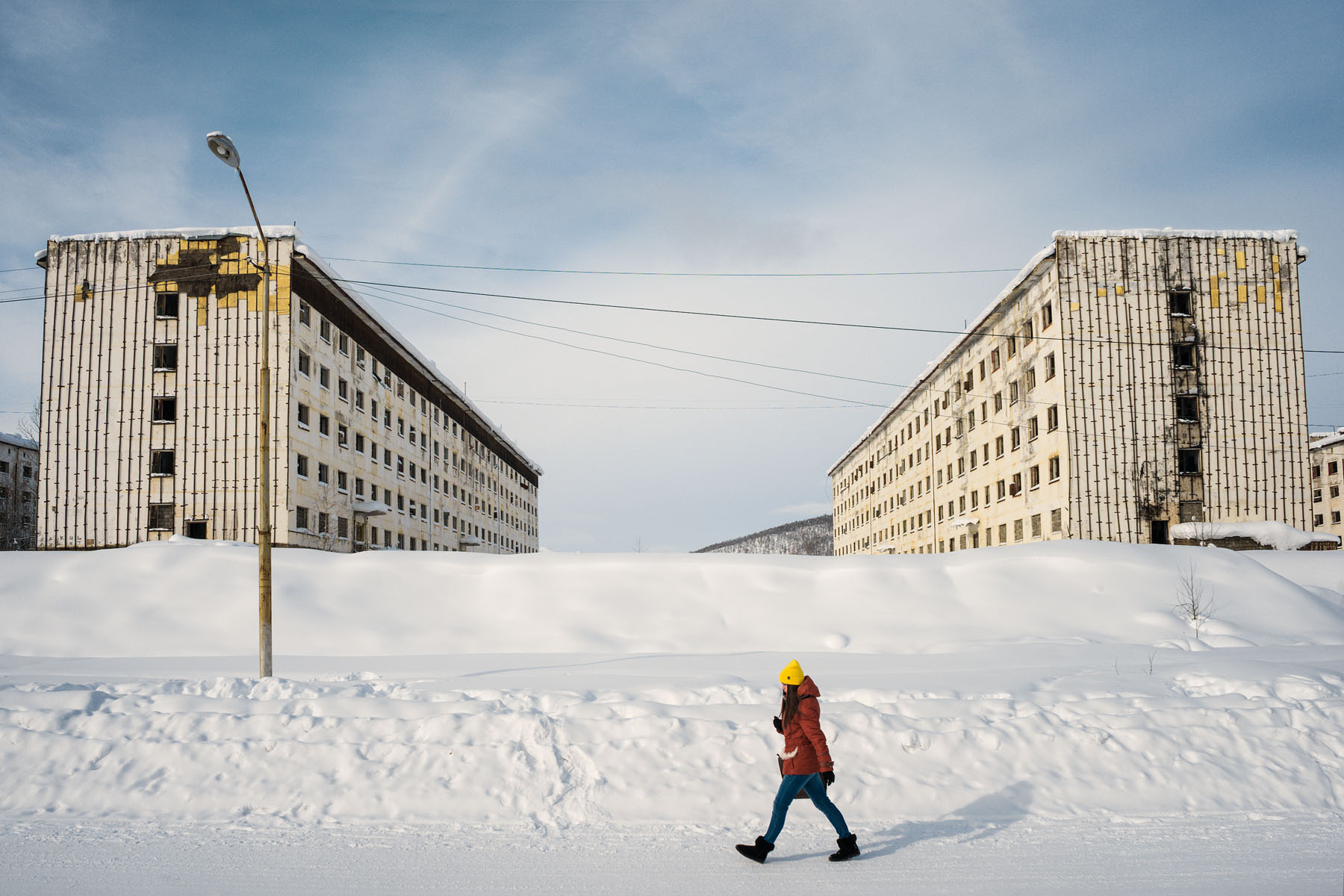
Sinegorye, 2016.
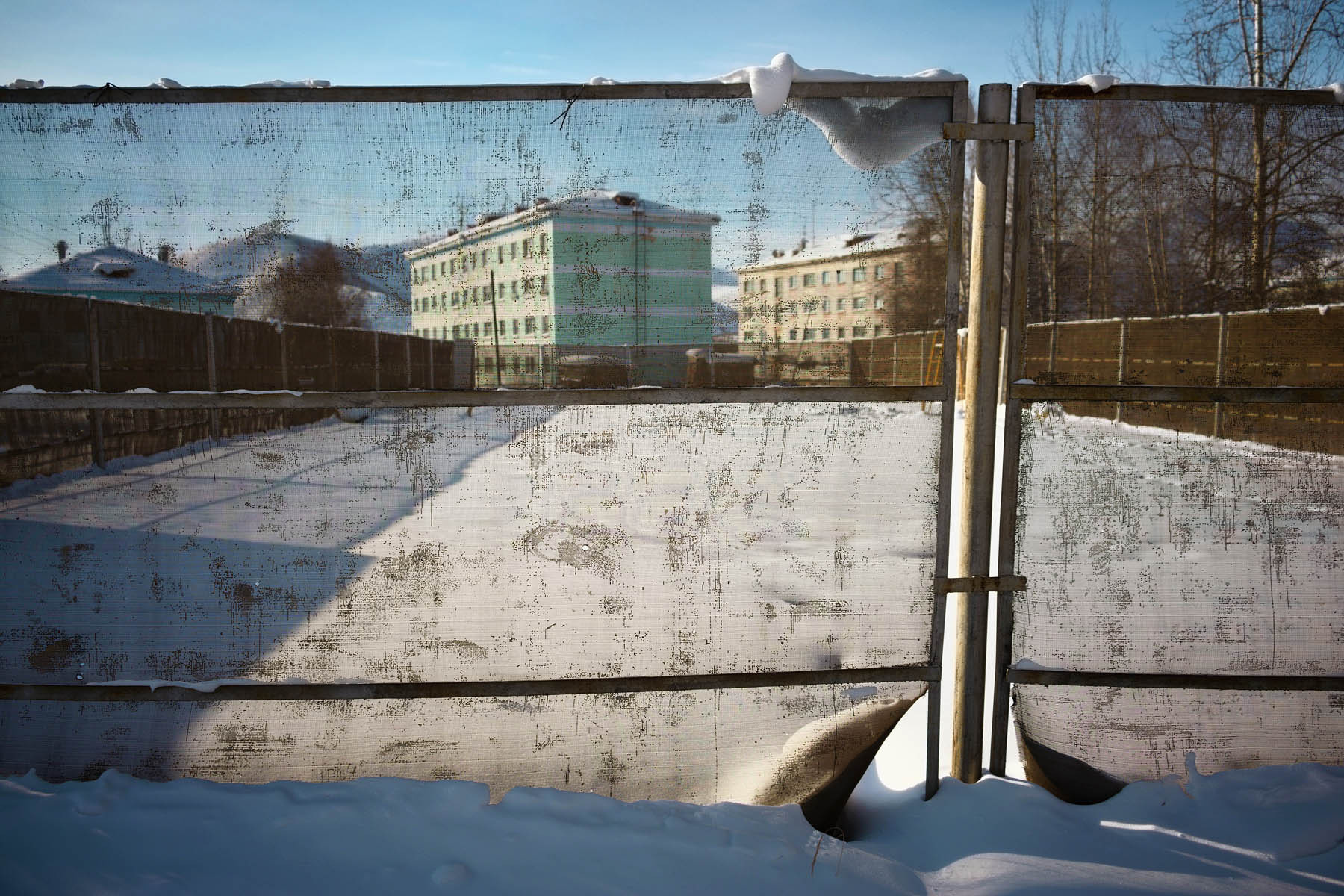
Yagodnoe, 2016.
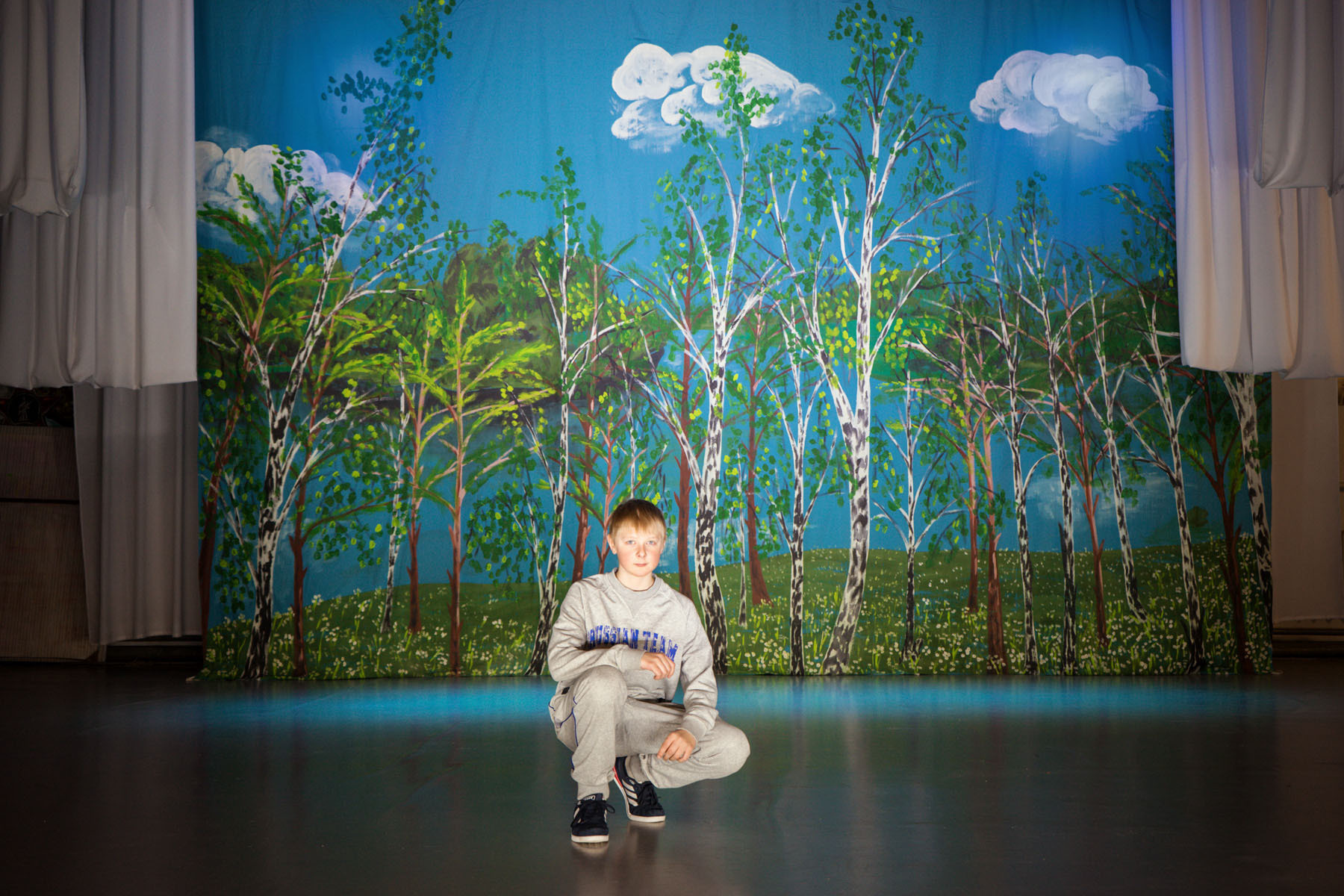
Boy poses on stage at the House of Culture in Yagodnoe, 2016.
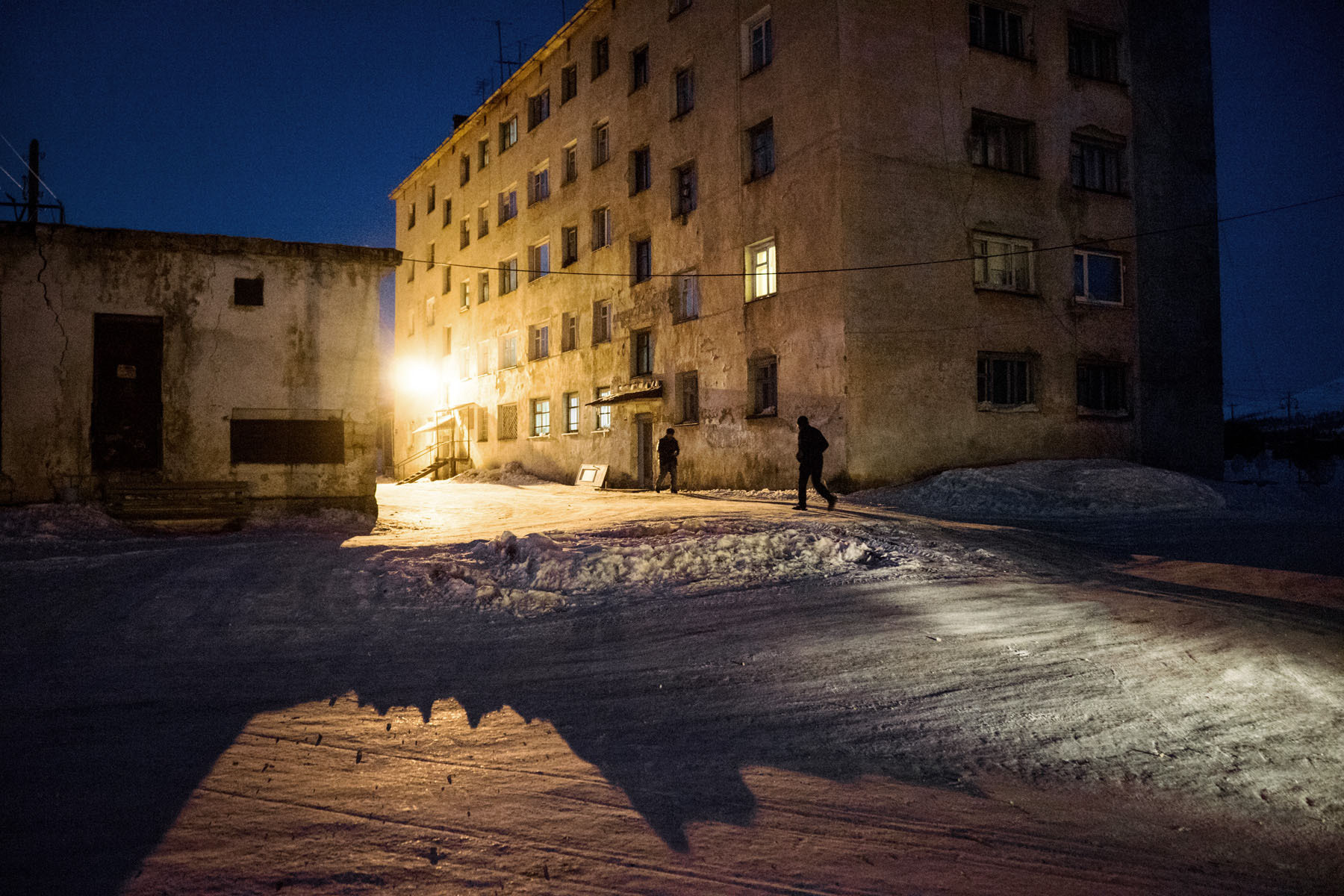
Night in Atka, 2015.
Girl hangs laundry for drying, Yagodnoe, 2014.
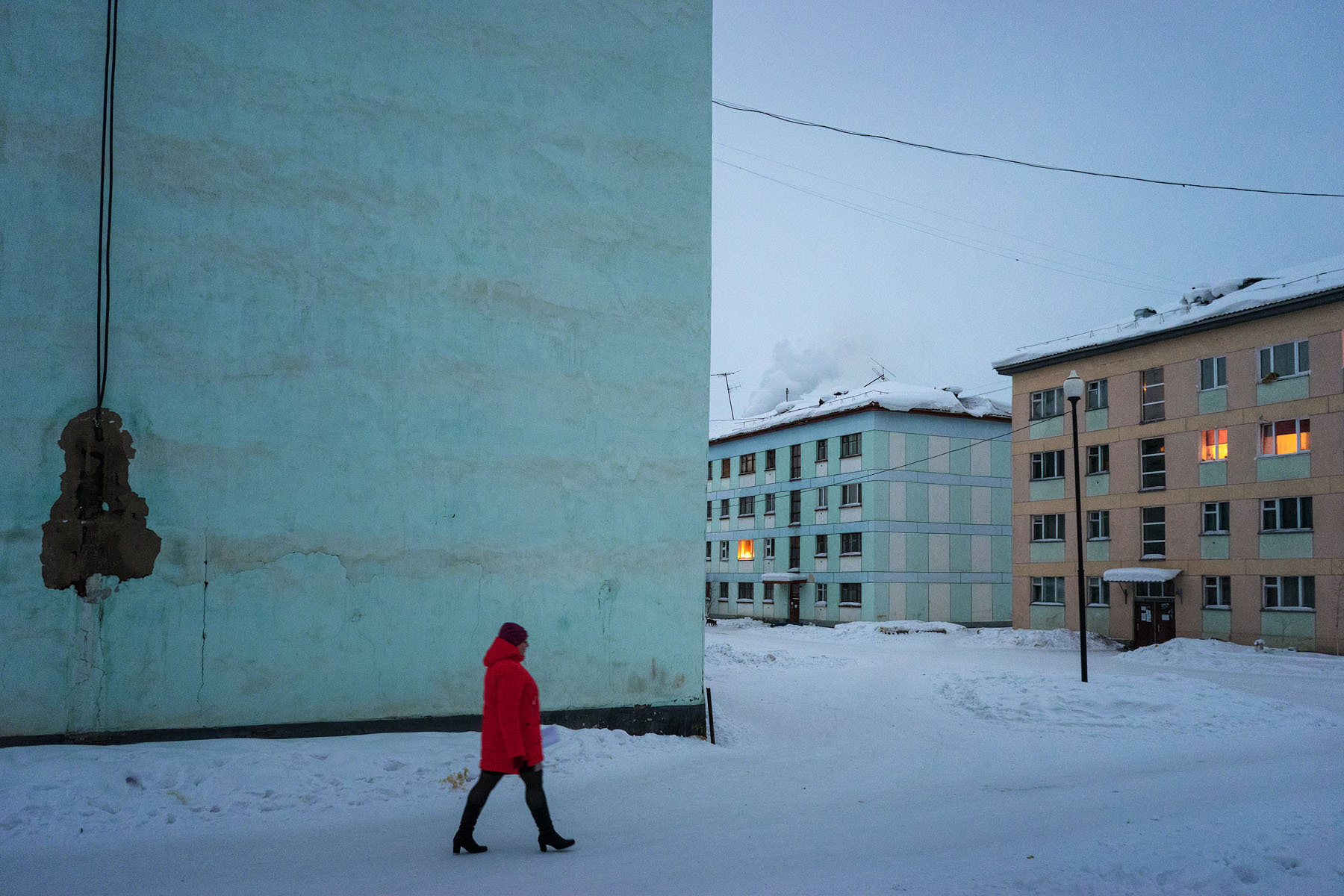
Debin, 2016.
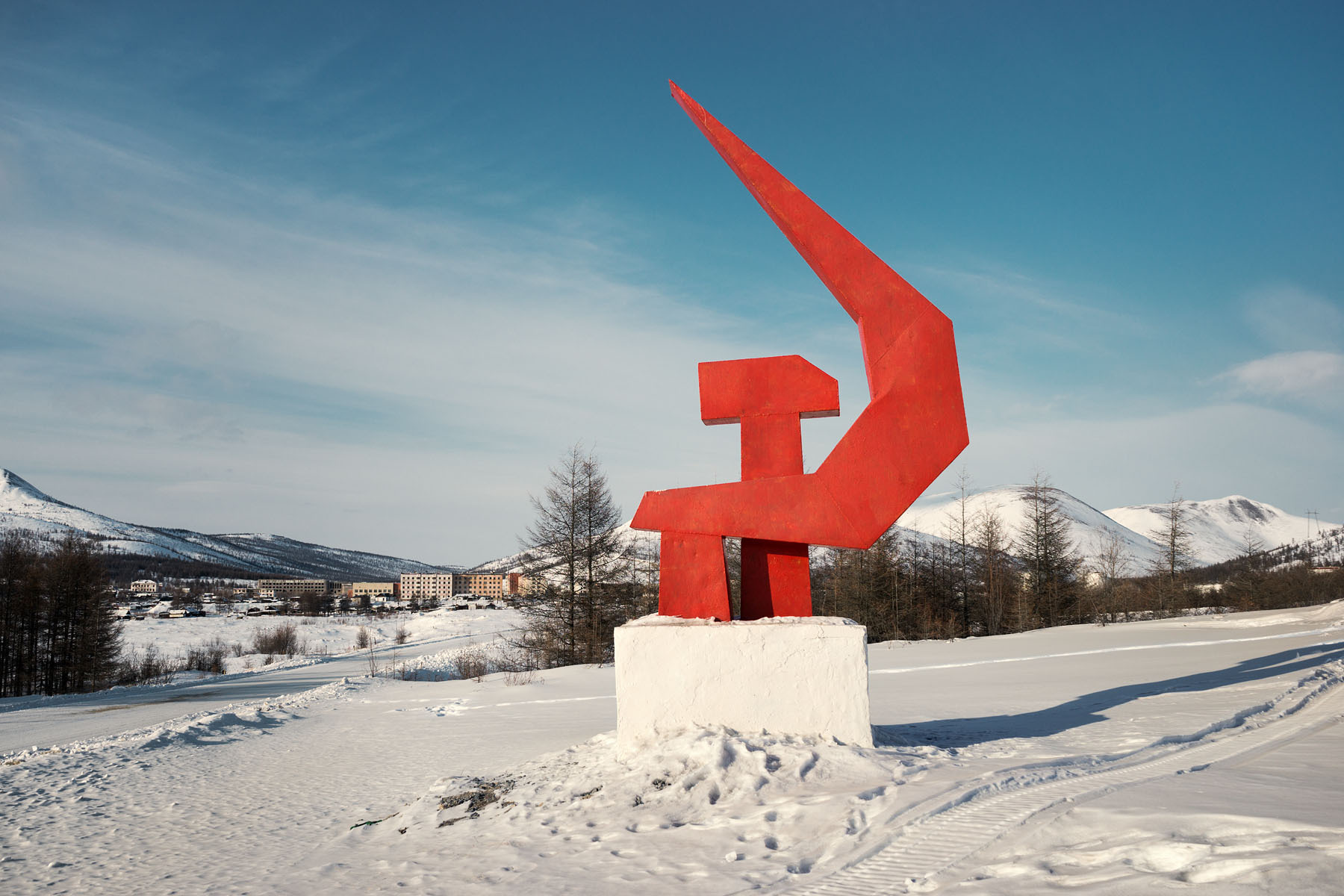
Sickle and Hammer monument near Atka, 2015.
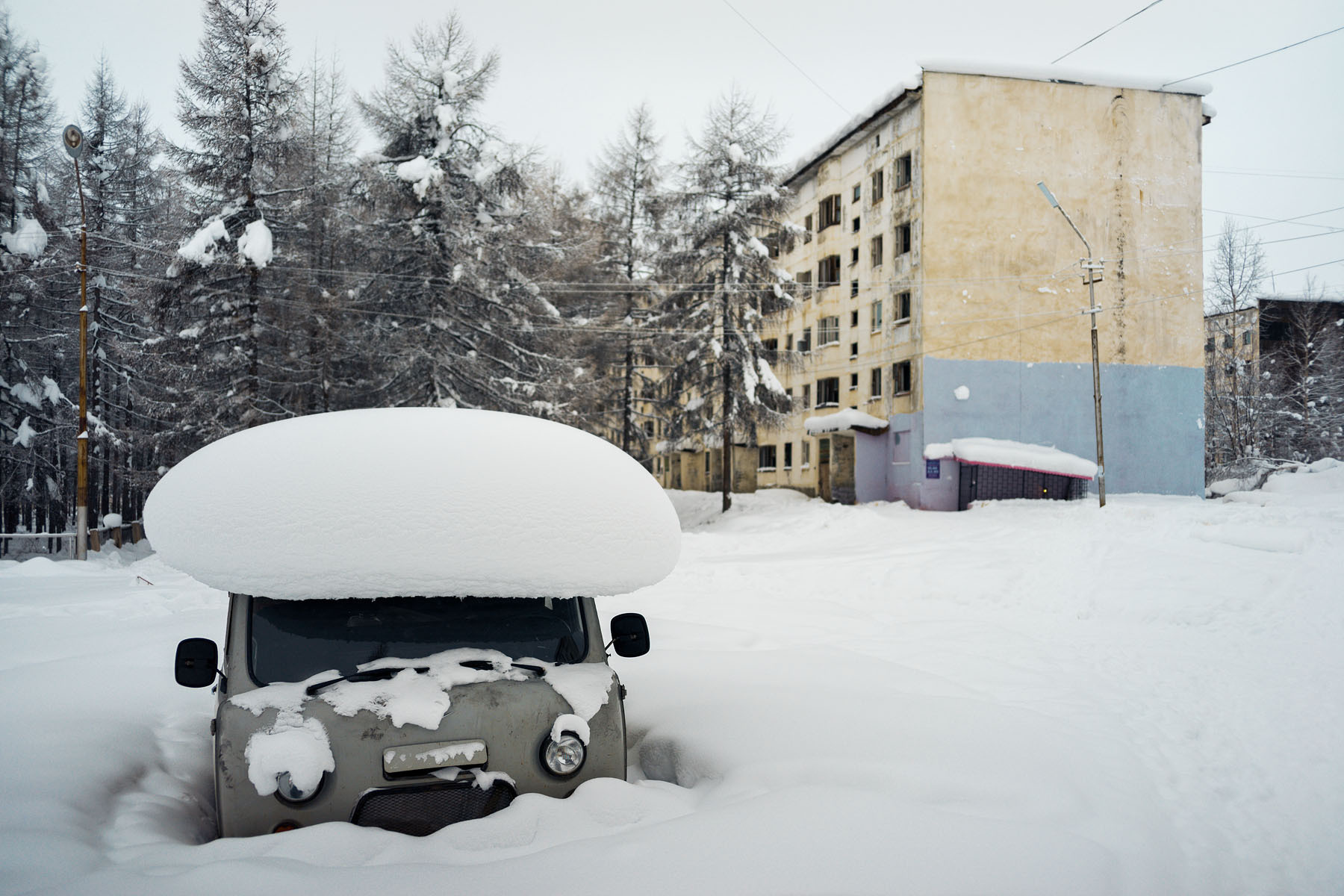
Sinegorye, 2016.
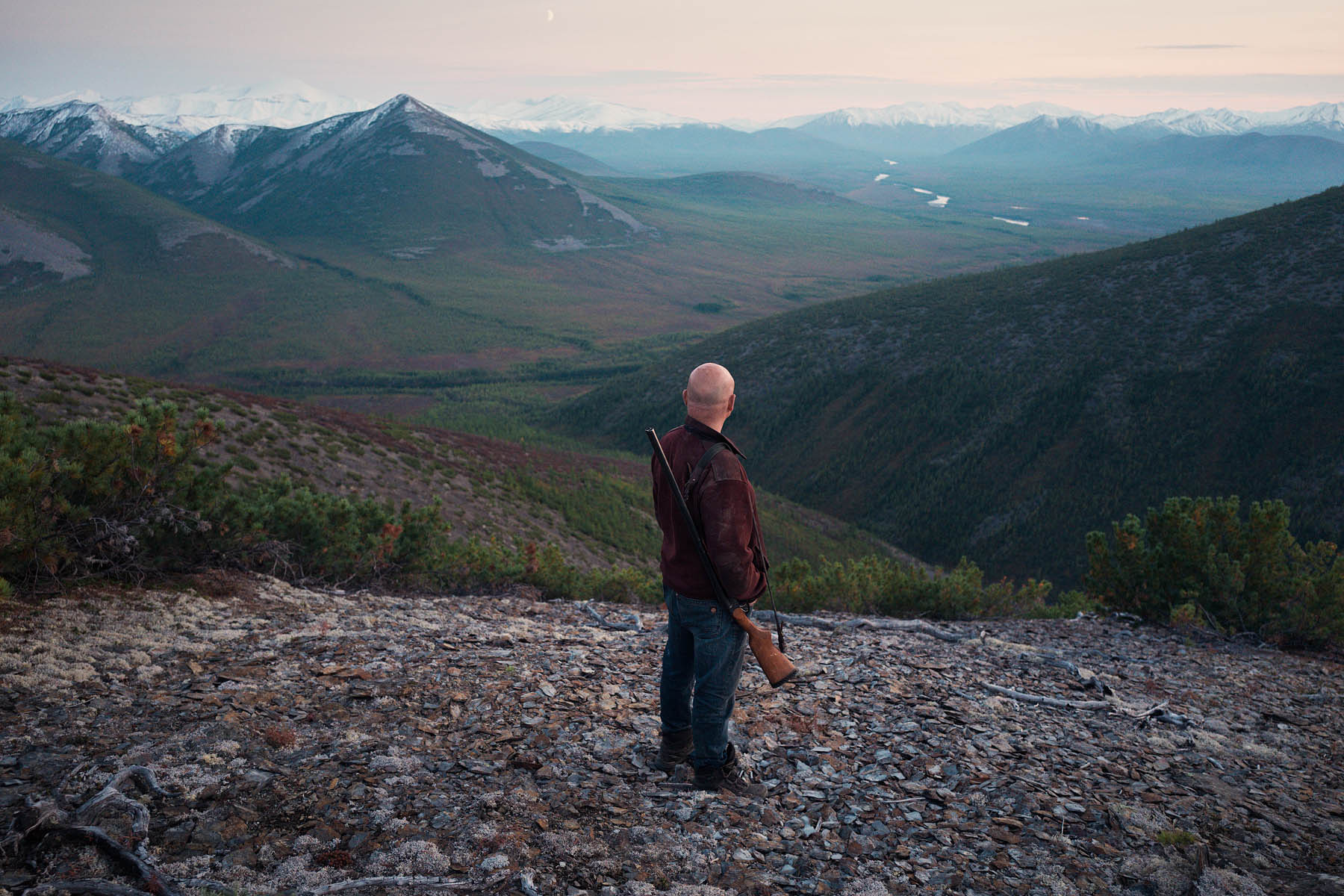
Magadan region, 2020.
Belichya, 2014. In the 1940s-50s on this site was the hospital for prisoners.
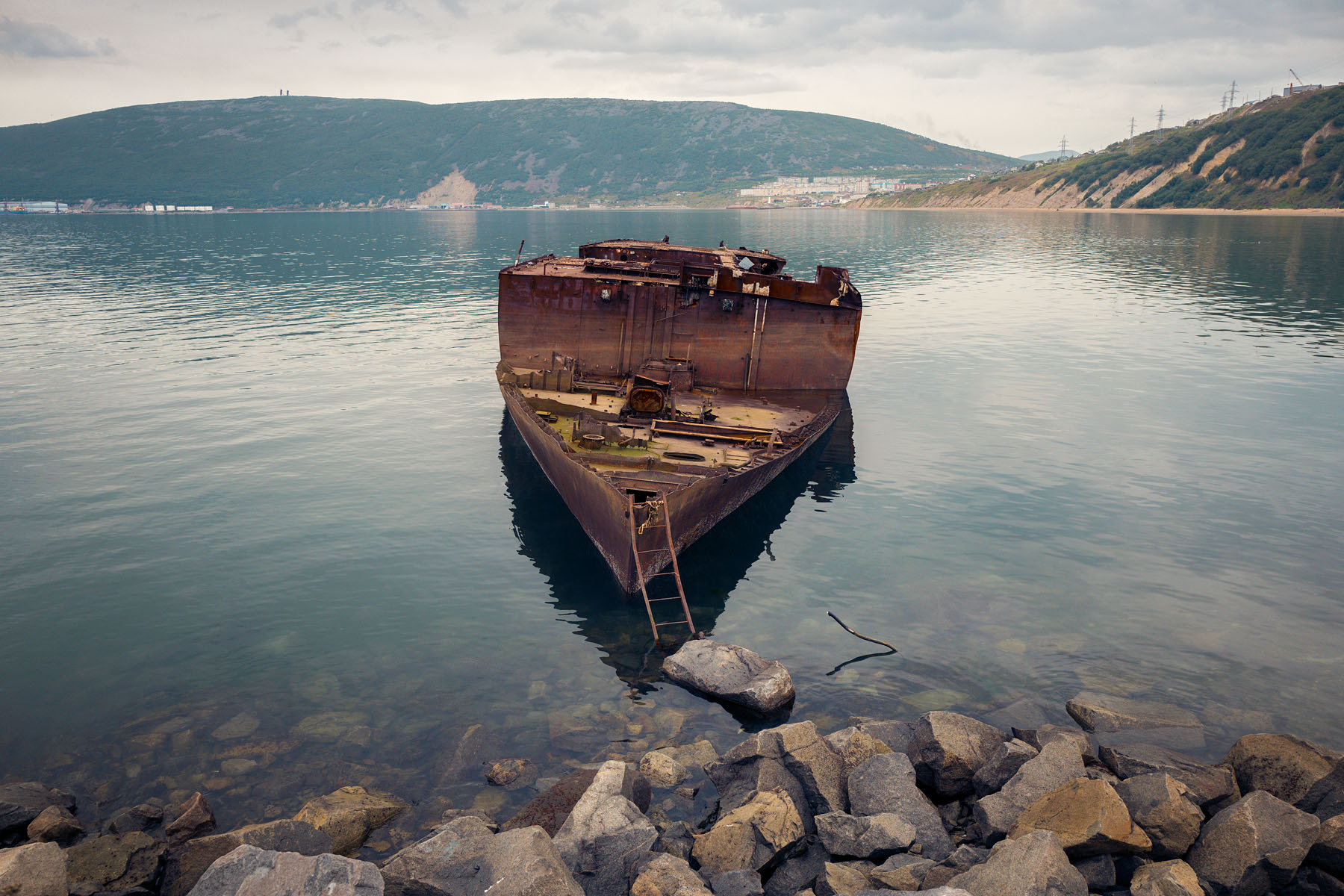
An abandoned ship near the fishing port on the shores of Nagayev Bay, Magadan, 2020.

Abandoned houses in Sinegorye, 2016.
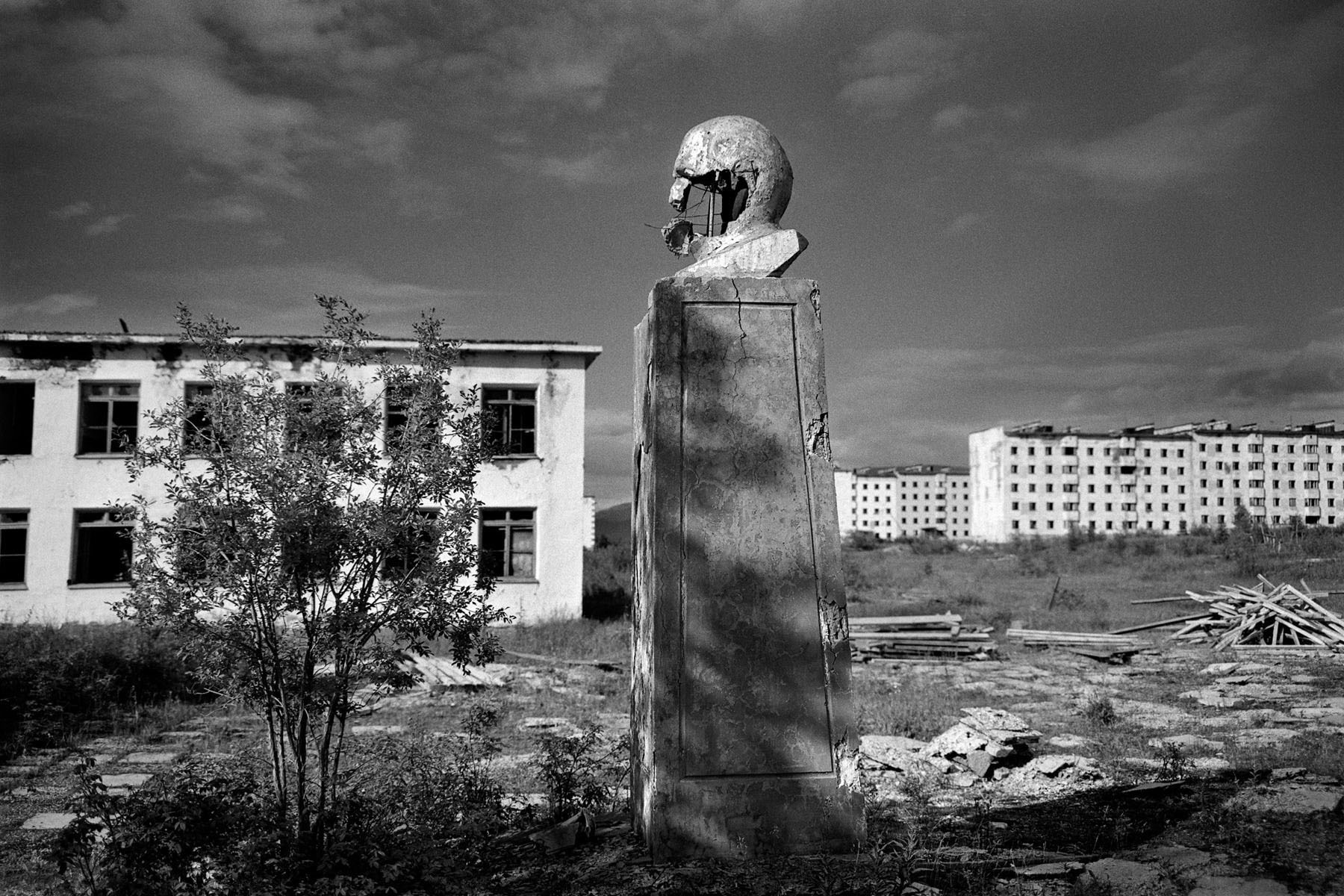
Kadykchan, 2014.
Kadykchan is a mining ghost-town. It was built during World War II as a miner’s settlement. The coal mine and the town were built by Gulag prisoners, among whom was Varlam Shalamov, a soviet writer and poet. After an explosion at the mine in 1996 Kadykchan was closed. All residents were evicted, houses were cut off from utilities, and the private sector was cauterized, so people didn’t come back. Since the 2010, Kadykchan was completely depopulated. A bust of Lenin on the central square was shot to pieces by the last residents to abandon their homes.
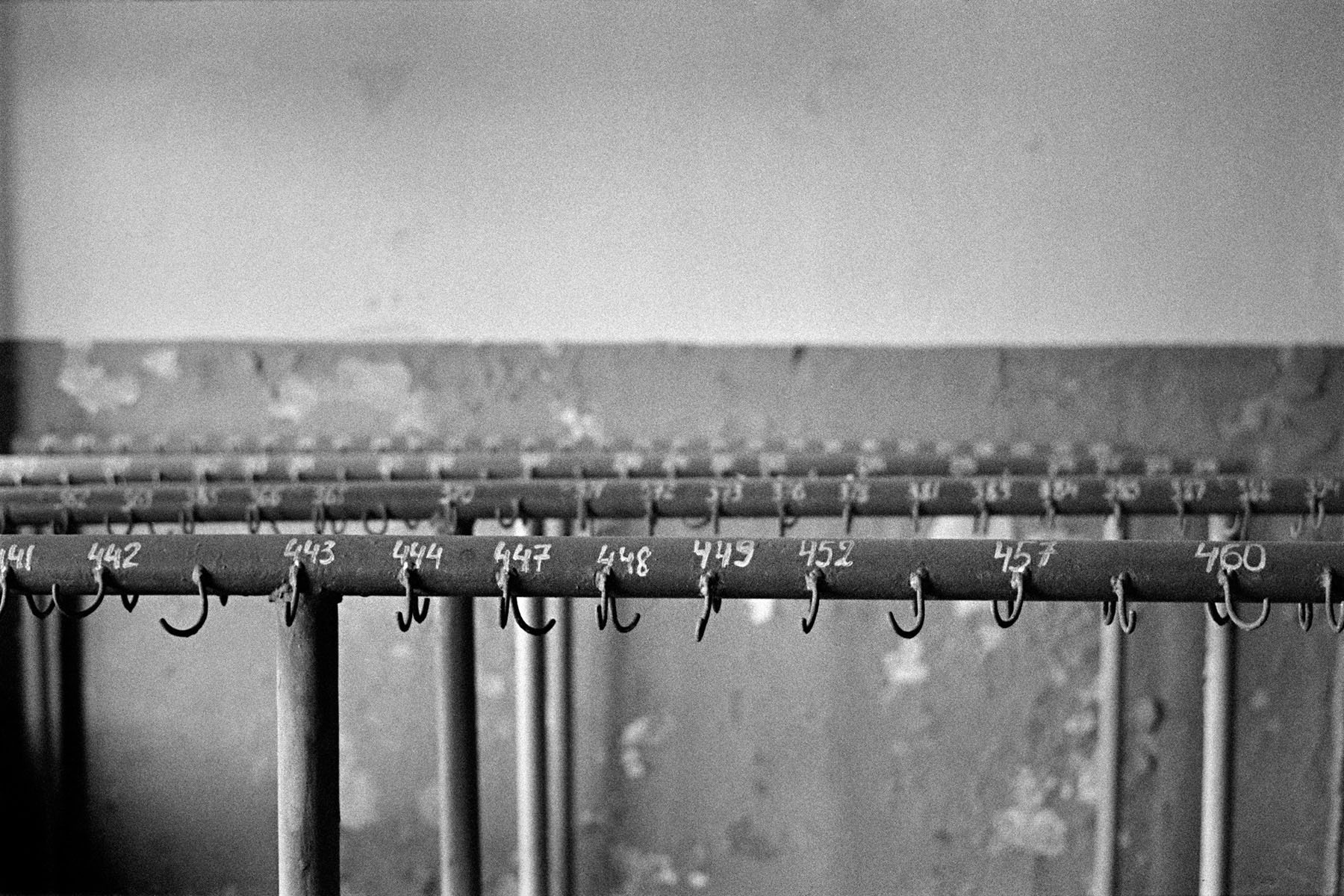
Dressing room in an abandoned school in Kadykchan, 2014.
Worker at the old boiler house, Orotukan, 2016.
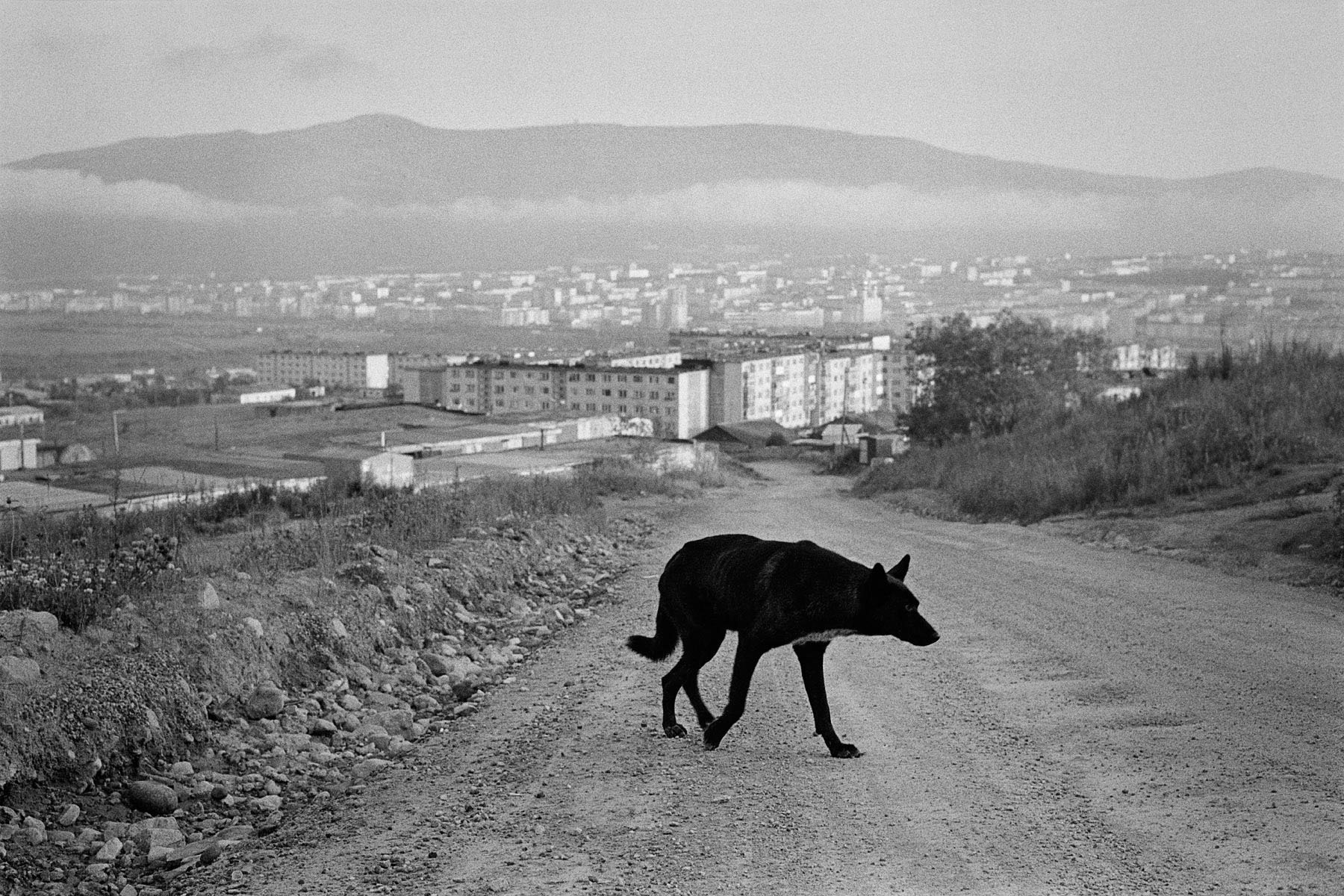
Magadan, 2014.
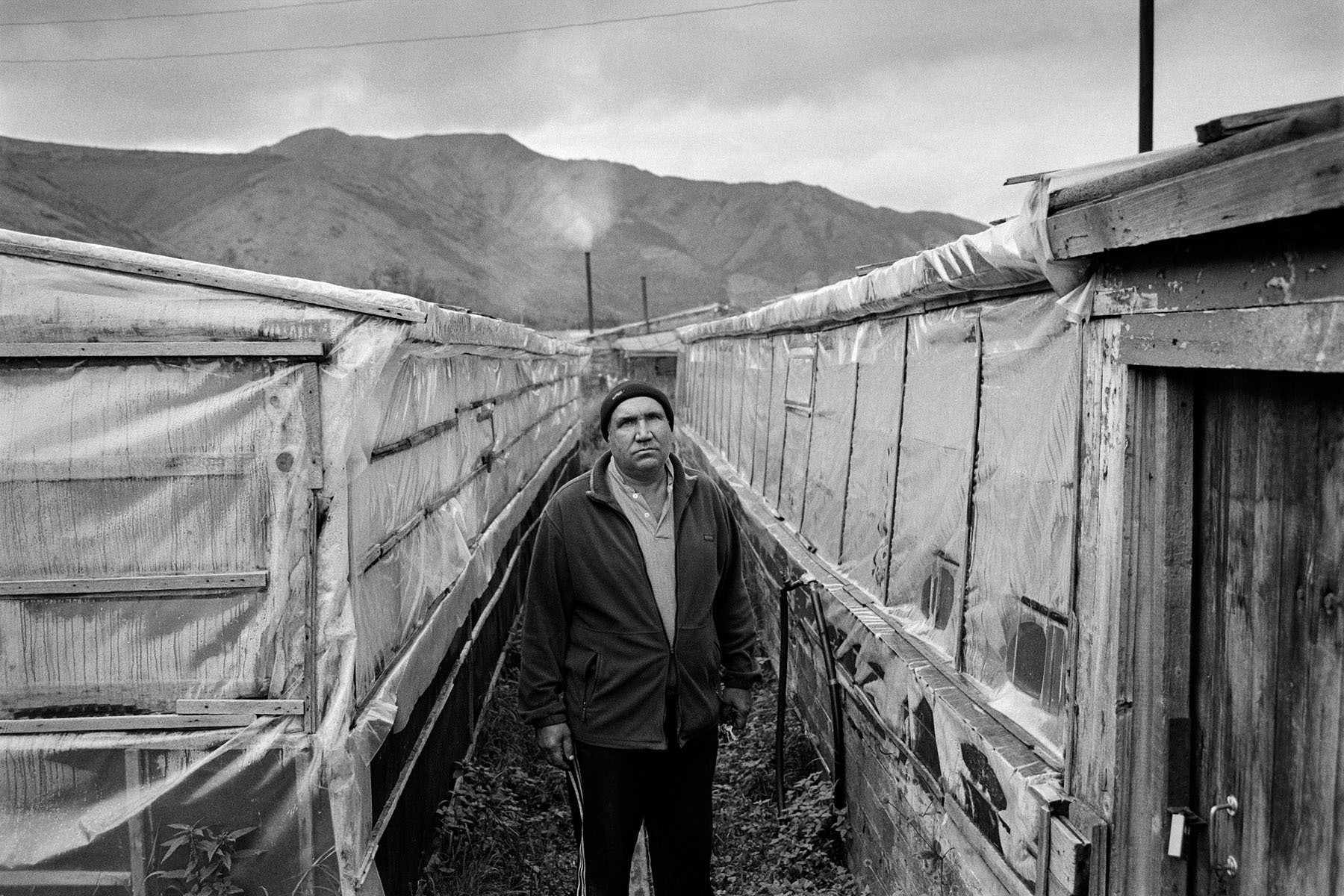
Karamken, 2014.
In 1995 the Karamken mining operations and the processing plant were closed down. In 2012 Karamken lost its status of “urban-type settlement”, and is now in the resettlement list. Valeriy is one of the few remaining residents. He cultivates cucumbers in greenhouses heated with firewood.

Abandoned houses in Elgen, 2015.
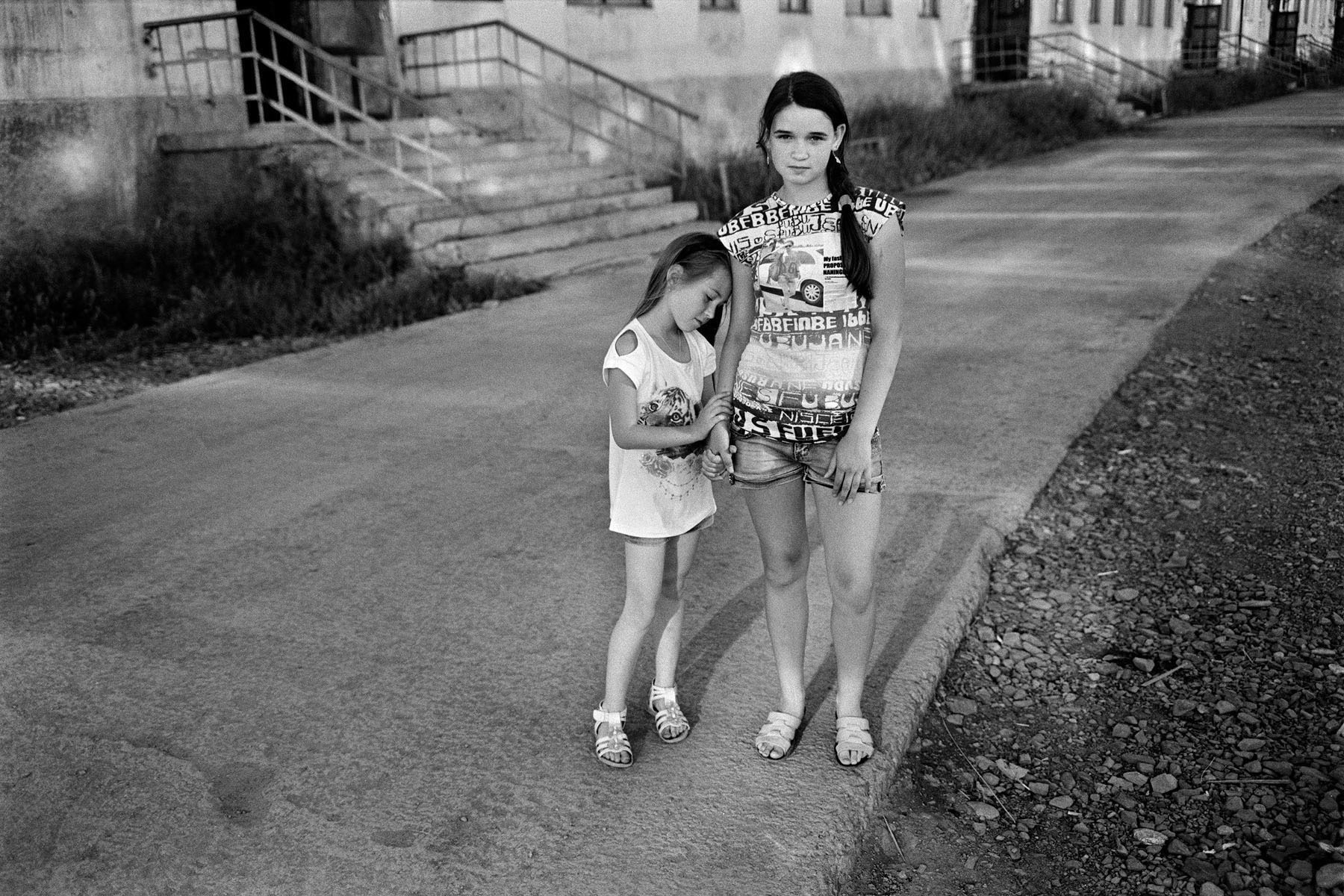
Yagodnoe, 2014.
Ice rink in Yagodnoe, 2015.










